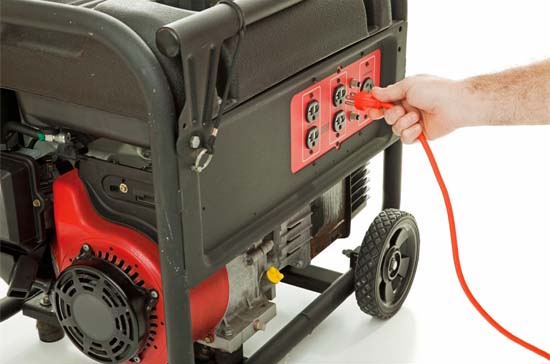Hurricane Michael Causes Major Power Outages
Hurricane Micheal made landfall as a Category 4 Hurricane. The eye of the storm hit Mexico City, Florida and continues to casue destruction and outages through adjoining states.
Hurricane Michael Makes History & Causes Devastation
Michael did not decrease in strength as it approached land with wind speeds increasing as it barreled towards Florida. It made landfall Wednesday October 10, 2018 in the early afternoon. Landfall is technically where the hurricane eye meets land. It landed in Mexico Beach, Florida as a Category 4 storm with sustained wind speeds of 155 mph, which is just 2 miles per hour shy of a Category 5 hurricane.
NEVER in recorded history has a storm of this magnitude hit the Florida Panhandle. Michael also attained the record for strongest hurricane to hit the United States in the month of October. After landfall, it continued inland to adjoining states with hurricane force winds and then decreasing to a tropical force storm. The Weather Channel covered the storm from the beginning. Terms such as "like a war zone" and "total devastation" were used in describing Mexico Beach, Florida. This could be compared with an EF-3 tornado that is approximately 45 miles wide.
Massive Power Outages to 5 States (1.5 Million without power)
The University of Michigan originally forecast that 2,000,000 electric customers would be left without power. Initially the numbers seemed high, but it turns out they were right in line.
Data Fusion Solutions is a tracking service that supplies electrical outage information. The service placed initial outages on October 10, 2018 at 285,000 customers. On October 11, 2018 the report was revised to 793,000 without power spread throughout five different states.
After Michael passed through, an estimated
1,500,000 customers were left without out power. The outage statistics as of 10/12/18 are listed below:
- Georgia - 138,604 supplied by various utilities. The highest percentage per outage of customers served being 82.2% and 86.6%
- Florida - 271,761 supplied by various utilities. The highest percentage per outage of customers served being 91.02 and 74.82%
- North Carolina - 455,778 supplied by various utilities. The highest percentage per outage of customers served being 66.66% and 20.34%
- Virginia - 474,073 supplied by various utilities. The highest percentage per outage of customers served being 58.77% and 44.37%
- South Carolina - 5,125 customers supplied by various utility. All supplier customers are below the 2% mark without power
The number of power outages increased after Michael made landfall because hurricane force winds, tropical force winds, and tornadoes spawned as it moved through the states. This storm is considered a major wind event, and many areas were inaccessible because of debris covering roads. As access was gained, the numbers without power increased. The authorities have said it could be days, weeks, and even months for some areas to be without power.
Always Remember Generator Safety During Emergencies
Industry, hospitals, state and federal municipalities have installed emergency generators and comply to Occupational Safety and Health Administration (OSHA) guidelines for generator operation. However, this represents a fraction of all of the generator use during wide-spread, long-duration power outages. Permanent residential emergency generator installations are beginning to become more popular. But the average home owner will purchase a portable generator.
Basic portable generator operating safety tips are illustrated bellow:
- Always review the manufacturers manual for operating procedures, warnings and cautions prior to generator operation.
- Never operate the generator in an enclosed space such as a home or garage. Carbon monoxide is a deadly, order less by product that can kill.
- Never operate the generator in an environment with explosive gas. Engine run-away or explosion can result.
- Never fuel a hot or running generator.
- Always operate the generator on a level surface.
- Never connect the load (extension cord) to a generator when running in the rain or you are in standing water. Electricity can kill.
- Always keep generator out of direct rain during operation.
Reviewing OSHA standards will supply complete safety rules. Go to
Using Portable Generators Safely (OSHA Fact Sheet) for more information. It is wise to start your generator and make sure it will provide power prior to power loss. Placing extension cords and emergency equipment in a standard location, having flashlights and a plan to connect desired components will ease the setup process when power is lost.
Contact Us with all your power generation needs.
Diesel Blog Team
| 10/11/2018 1:34:13 PM
|
0 comments